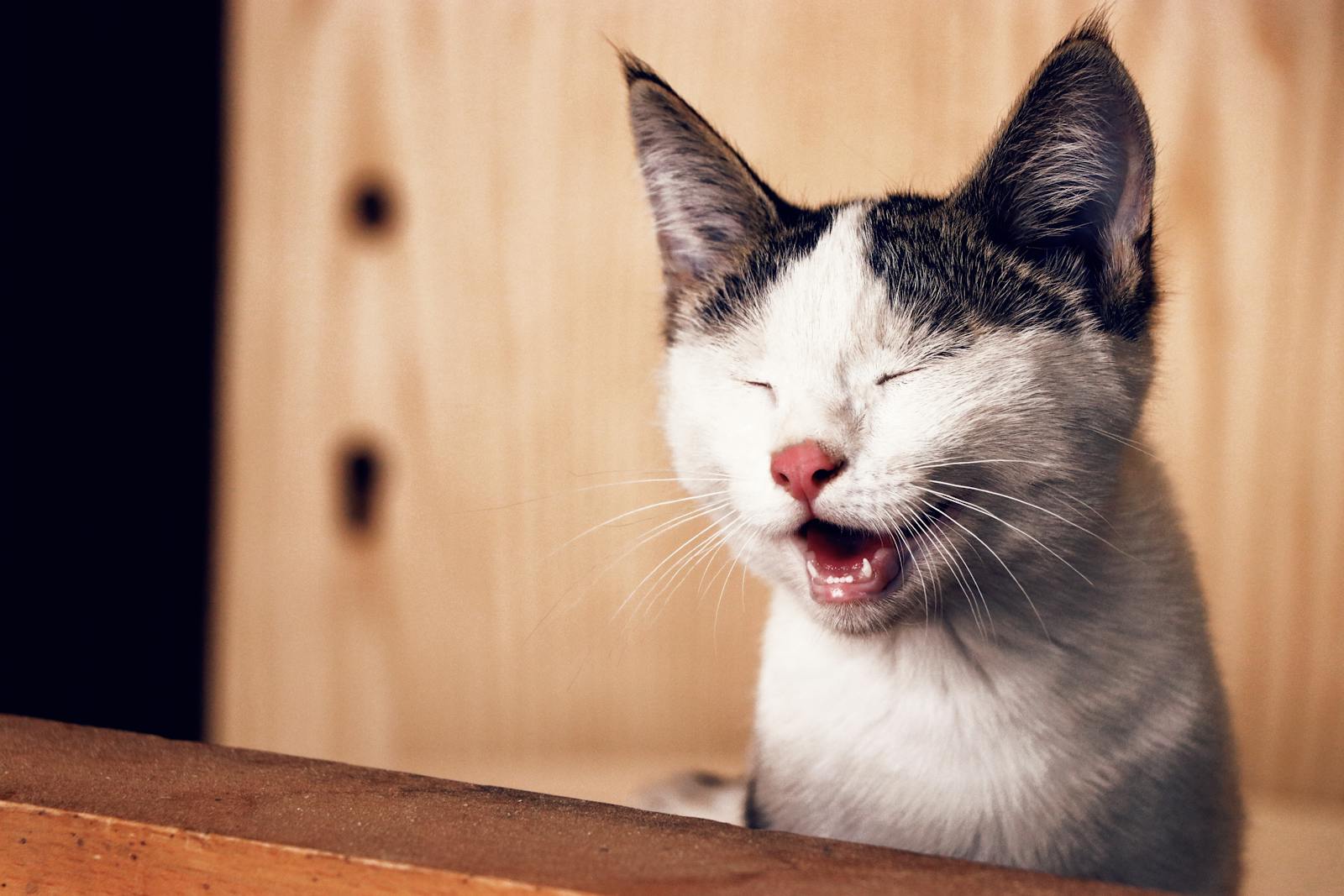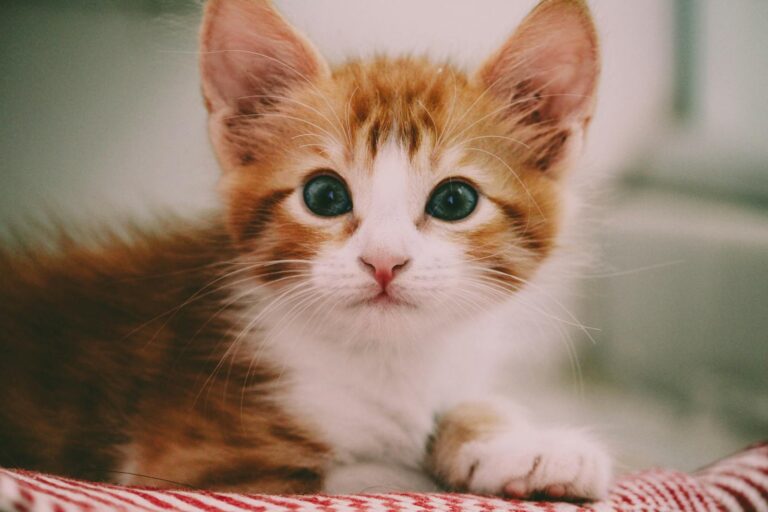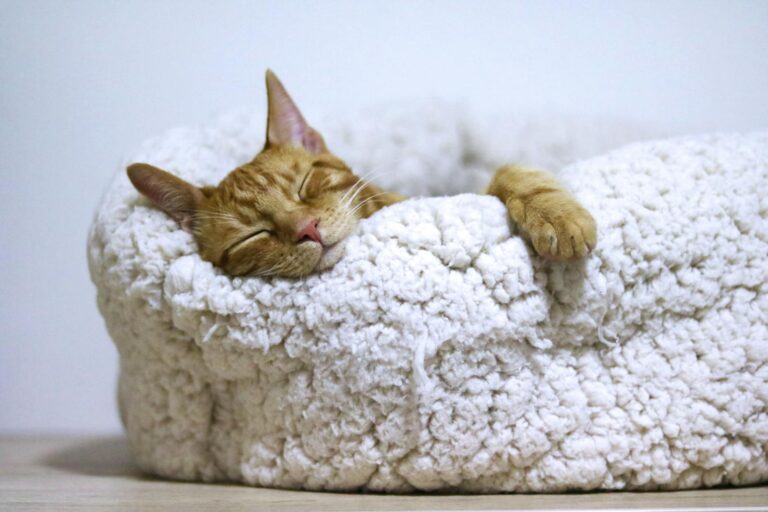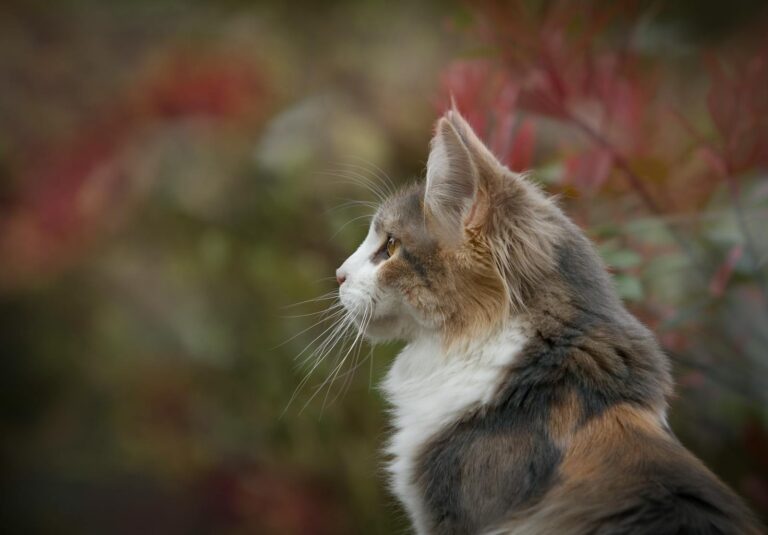Recognizing the Signs Your Cat Is Stressed – Effective Ways to Help
If you’re a cat owner, understanding your feline’s emotions is crucial in ensuring their well-being. This article explores Signs Your Cat Is Stressed (And How to Help) them feel more secure and comfortable in their environment.
Decoding Feline Distress: Understanding the Signs of Stress in Cats
Cats are known for their independent spirits, but they are also creatures that thrive on security and stability. When stress creeps into their lives, it can manifest in various ways, some of which might be subtle and easy to overlook. Understanding how to decode these signs is vital for any cat owner.
Stress in cats can arise from numerous factors—changes in their environment, health issues, or even emotional disturbances due to changes in routine. The first step toward aiding your stressed cat is recognizing when they exhibit signs of distress.
Common Physical Indicators of Stress in Cats
Physical symptoms in cats often reveal underlying anxiety. Unlike humans who may vocalize their feelings, cats tend to show their stress through body language.
- Changes in Grooming Habits
One of the most noticeable physical signs of stress is a change in grooming behavior. A stressed cat may over-groom, leading to bald patches or skin lesions, while others may neglect their grooming altogether, resulting in matted fur. Changes in grooming habits can signal deep emotional issues. - Unusual Aggression or Withdrawal
If your cat becomes overly aggressive or suddenly retreats from social interactions, this could indicate stress. Aggressive behavior may manifest as swatting or biting, whereas withdrawal could mean hiding or a lack of interest in play. - Altered Eating or Drinking Patterns
Stress can lead to gastrointestinal issues, causing your cat to eat less or refuse food altogether. Conversely, some cats may eat excessively or develop compulsive behaviors like eating too quickly. Observing your cat’s eating habits can provide insights into their mental state.
Behavioral Signs of Stress in Cats
Behavioral changes are often the easiest indicators of stress. These can range from mild alterations in daily routines to drastic shifts in personality.
- Increased Vocalization
While some cats are naturally talkative, an uptick in vocalization can indicate distress. If your usually quiet cat begins meowing excessively or making unusual sounds, it’s essential to consider what might be causing their discomfort. - Litter Box Issues
Cats may express their stress through inappropriate elimination, which can be incredibly frustrating for owners. This behavior often stems from anxiety rather than medical problems. A sudden change in litter box habits should prompt further investigation into your cat’s emotional state. - Pacing or Restlessness
Cats that are feeling stressed may exhibit signs of restlessness, pacing around the house or circling in one spot. This behavior can stem from a variety of triggers and shows that your cat is struggling to find comfort in their environment.
Tail Language: Understanding Your Cat’s Emotions
A cat’s tail can be a powerful indicator of its emotional state. The position and movement of the tail can communicate various feelings from happiness to agitation.
- Tail Position
A high-held tail typically indicates confidence and contentment, while a low or tucked tail signifies fear or submission. A puffed-up tail often points to agitation or excitement, signaling potential threats in the cat’s environment. - Tail Movement
Slow swishing may indicate interest or curiosity, while rapid flicking often reflects irritation or frustration. Observing your cat’s tail can give you insight into how they’re feeling at any given moment.
Understanding these signs is crucial to creating a nurturing environment for your pet. By paying attention to your cat’s body language and behavior, you’ll be better equipped to recognize Signs Your Cat Is Stressed (And How to Help) them.
Subtle Signals: Recognizing Behavioral Changes Indicative of Cat Stress
While many signs of stress in cats are overt, others can be much more subtle. Recognizing these nuanced behavioral changes requires keen observation and a genuine understanding of your feline companion.
Changes in Social Behavior
Cats are unique creatures with distinct personalities. Any sudden shift away from their typical social behavior can be a red flag.
- Increased Clinginess or Dependency
A once-independent cat may become unusually clingy, following you from room to room or insisting on being near you constantly. This increased need for companionship could indicate they are feeling insecure and anxious. - Avoidance of Interaction
Conversely, if your social cat starts to avoid interaction altogether, this is also a sign of stress. They may hide under furniture, refuse to engage in play, or simply ignore your presence.
Body Language Beyond the Obvious
Feline body language offers insights beyond mere physical signs. Observing your cat’s posture can provide clues about their emotional state.
- Ears and Eyes
Ears that lay flat against the head can suggest fear or aggression, while wide eyes may indicate surprise or anxiety. Squinting can represent trust, but when combined with other signs, may indicate stress. - Body Tension
A relaxed cat will have loose muscles and a soft body posture. In contrast, a cat that appears tense or rigid may be experiencing anxiety. This tension can be particularly evident when they encounter new situations or unfamiliar environments.
Changes in Play Behavior
Play is an essential component of a cat’s life. A decline in playfulness can signal stress and unhappiness.
- Disinterest in Toys
If your cat suddenly loses interest in their favorite toys or games, it may reflect deeper issues. A stressed cat may not have the energy or desire to engage, showing that something is amiss. - Aggressive Play
On the flip side, some cats may engage in overly aggressive play as a way to cope with their stress. This change in behavior can lead to uncharacteristic biting or scratching during playtime.
By closely monitoring these subtle signals, you’ll deepen your understanding of your cat’s emotional landscape. This awareness allows you to take actionable steps toward reducing their stress and enhancing their overall quality of life.
Common Stressors: Identifying Potential Triggers for Cat Anxiety
Understanding common stressors that affect cats is essential in helping them navigate their world with ease. Many factors can contribute to feline anxiety, and identifying these triggers can pave the way for effective interventions.
Environmental Factors
The environment plays a significant role in a cat’s well-being. Unfavorable conditions can amplify stress levels.
- Changes in Household Dynamics
New family members, whether human or animal, can disrupt your cat’s sense of security. Cats are creatures of habit, so introducing new pets or even moving furniture can create unease and anxiety. - Loud Noises
Sounds from fireworks, thunderstorms, or construction work can frighten cats and trigger stress responses. Even everyday noises, such as vacuum cleaners or loud television shows, can cause anxiety in sensitive felines.
Health-Related Issues
A cat’s physical health directly correlates to their emotional state. Health problems can introduce stress both directly and indirectly.
- Pain or Illness
Undiagnosed pain or illness can lead to behavioral changes and stress. If your cat exhibits signs of discomfort, such as hiding, excessive grooming, or changes in appetite, consulting with a veterinarian is paramount. - Medication Side Effects
Some medications can cause side effects that may lead to anxiety. Always consult with your vet to understand how prescribed treatments can affect your cat’s mood and behavior.
Lifestyle Changes
Life events can impact a cat’s emotional health significantly. Recognizing these lifestyle changes can inform your approach to supporting them.
- Moving to a New Home
Relocating can be overwhelming for a cat. The unfamiliar surroundings, scents, and sounds can induce stress, causing them to act out or hide. It’s crucial to ease this transition for your cat by providing familiar items and a safe space. - Changes in Routine
Cats thrive on routine. Changes in feeding schedules, playtimes, or sleeping arrangements can cause confusion and anxiety. Maintaining a consistent daily routine can help alleviate this stress.
Identifying these common stressors allows you to proactively address potential issues before they escalate. Being mindful of your cat’s environment and lifestyle can foster a more harmonious living situation, minimizing Signs Your Cat Is Stressed (And How to Help) them effectively.
Environmental Enrichment: Creating a Calming and Secure Space for Your Cat
Providing an enriched environment is key to your cat’s emotional and physical well-being. Enriching their surroundings can help reduce stress and promote a sense of peace within the home.
Safe Spaces for Retreat
Creating areas where your cat can retreat to feel safe is essential in managing their stress levels.
- Cozy Hideaways
Incorporate cozy spots where your cat can curl up and hide, such as cat trees or enclosed beds. These hideaways offer comfort and security, allowing them to escape when feeling overwhelmed. - Vertical Spaces
Cats are natural climbers. Providing vertical spaces, such as shelves or cat trees, gives them opportunities to explore and survey their territory from high vantage points, which can be comforting.
Interactive Play and Engagement
Engaging your cat in interactive play is essential for mental stimulation and emotional relief.
- Toys and Puzzles
Invest in toys that challenge your cat mentally and physically. Puzzle feeders or interactive toys can stimulate their minds, preventing boredom that often exacerbates stress. - Scheduled Playtime
Dedicate time each day for interactive play sessions using feather wands or laser pointers. These moments not only strengthen your bond with your cat but also provide necessary exercise to alleviate stress.
Sensory Experiences
Creating sensory-rich environments can positively influence your cat’s mood and reduce anxiety.
- Natural Elements
Introducing plants that are safe for cats can provide sensory enrichment. Consider catnip or wheatgrass, which many cats enjoy. Additionally, incorporating natural light and views can lift their spirits. - Soothing Sounds
Soft music or white noise machines can create a calm atmosphere, especially during stressful events like thunderstorms or fireworks. These sounds can mask alarming noises that might otherwise cause distress.
By thoughtfully curating your cat’s environment, you can foster a sense of safety and belonging. This proactive approach can minimize Signs Your Cat Is Stressed (And How to Help) them feel more at ease in their surroundings.
Behavioral Modification: Techniques to Reduce Stress and Anxiety in Cats
Once you’ve identified stressors and created a supportive environment, implementing behavioral modification techniques can significantly improve your cat’s emotional well-being.
Positive Reinforcement Training
Positive reinforcement is a powerful tool that encourages desired behaviors while promoting a trusting relationship between you and your cat.
- Rewarding Calm Behavior
Whenever your cat displays calm behavior in potentially stressful situations, reward them with treats or praise. This reinforces positive experiences associated with stress-inducing scenarios and helps reshape their responses. - Training Sessions
Utilize short training sessions to teach basic commands or tricks. This not only provides mental stimulation but also fosters a sense of accomplishment, boosting your cat’s confidence.
Desensitization Techniques
Gradual desensitization can help your cat adjust to stressors in a controlled manner.
- Slow Introductions
If your cat is fearful of new people or pets, gradually introduce them in a safe and controlled environment. Allow your cat to observe from a distance and encourage positive associations through treats or toys. - Incremental Exposure
For cats afraid of specific sounds, such as thunderstorms, play recordings at a low volume while engaging in enjoyable activities. Gradually increase the volume over time as they become more accustomed to the sounds.
Creating Routines
Establishing predictable routines contributes to emotional stability in cats.
- Consistent Feeding Schedule
Feed your cat at the same times each day to create predictability. A consistent feeding schedule can reduce anxiety related to food scarcity. - Regular Playtimes
Incorporate regular play sessions into your daily routine. Knowing they have dedicated playtime can provide your cat with something to look forward to, helping to alleviate stress.
Implementing these behavioral modification techniques can create a more resilient cat. With time and patience, you can cultivate an environment that minimizes Signs Your Cat Is Stressed (And How to Help) them thrive.
When to Seek Professional Help: Consulting a Veterinarian or Feline Behaviorist
Sometimes, despite your best efforts, a cat may require professional guidance to overcome severe stress or anxiety. Recognizing when to seek professional help is essential for your cat’s health and happiness.
Identifying Severe Stress Symptoms
There are certain signs of distress that warrant immediate veterinary attention.
- Prolonged Changes in Behavior
If your cat shows persistent changes in behavior that last longer than a few weeks, it may be time to consult a professional. Issues like prolonged hiding, aggression, or severe litter box problems should be addressed swiftly. - Physical Health Concerns
If stress manifests physically through weight loss, vomiting, diarrhea, or other health-related issues, a visit to the vet is necessary to rule out medical conditions that may require treatment.
Finding the Right Professional
When seeking professional help, it’s essential to choose the right expert for your cat’s needs.
- Veterinarians vs. Behaviorists
Veterinarians can rule out medical issues contributing to stress, while certified feline behaviorists specialize in understanding and modifying cat behavior. Depending on your cat’s situation, one or both may be helpful. - Researching Credentials
Ensure that the professional you choose has the appropriate qualifications and experience in dealing with feline behavior. Look for certifications from reputable organizations to ensure you’re receiving knowledgeable guidance.
Supportive Therapy Options
In some cases, additional therapy options may help your cat manage stress more effectively.
- Medications
Sometimes, medication may be required to help your cat cope with severe anxiety. Working closely with a veterinarian will help determine the best course of action. - Behavioral Programs
Some professionals offer structured behavioral modification programs tailored to your cat’s specific needs. Engaging in such a program can provide comprehensive support and tools to tackle anxiety.
Knowing when to seek professional help can make all the difference in your cat’s life. Acting swiftly ensures that your furry friend receives the necessary care and attention to live a fulfilling and happy life.
Conclusion
Understanding Signs Your Cat Is Stressed (And How to Help) them can significantly improve their quality of life. By decoding their distress signals, recognizing stressors, and providing a supportive environment, you can make a meaningful impact on your cat’s emotional well-being. Implementing behavioral modification techniques and knowing when to seek professional help are essential steps in fostering a healthy and happy feline companion. Through love, patience, and understanding, you can create a peaceful home that promotes resilience and joy in your beloved pet.







